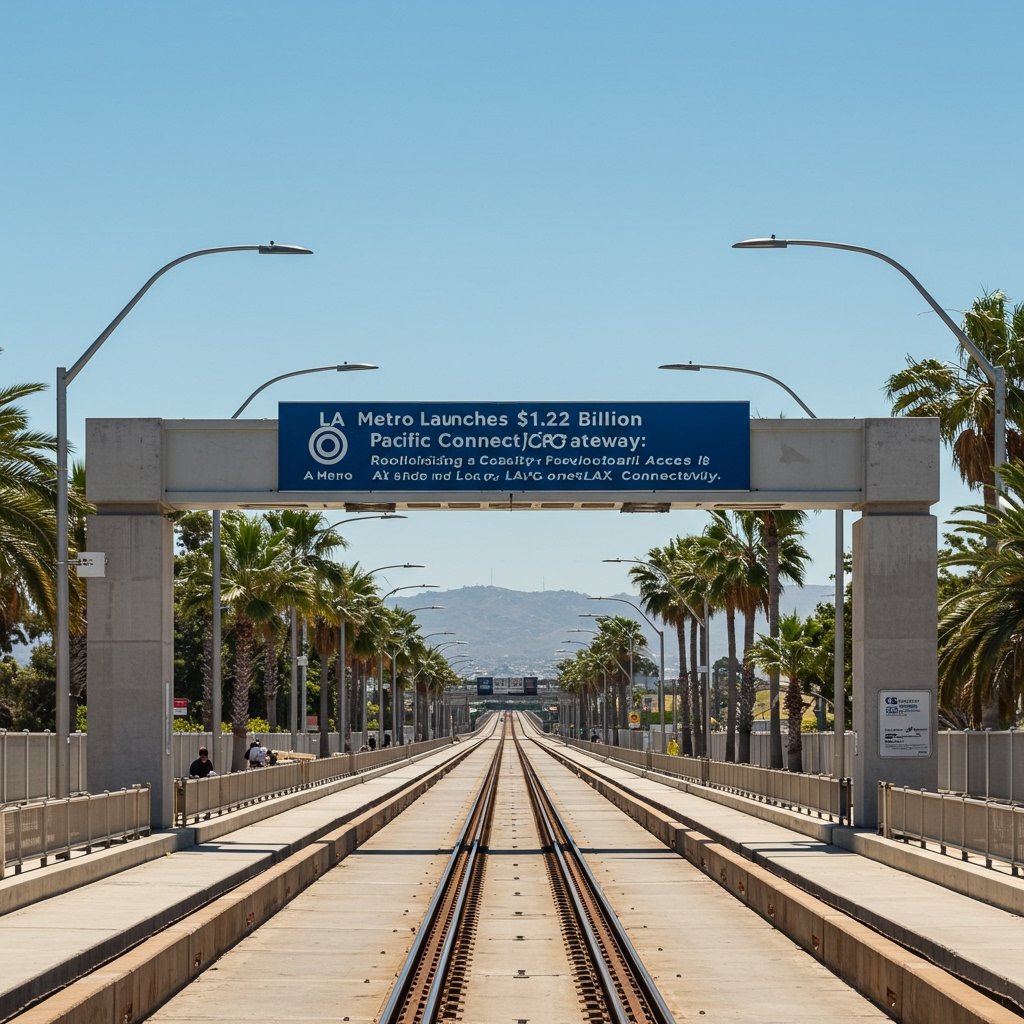LA Metro Breaks Ground on Transformative $1.2 Billion Pacific Connect Gateway
LOS ANGELES, CA – Officials from the Los Angeles County Metropolitan Transportation Authority (Metro) marked a significant milestone yesterday, breaking ground on the ambitious $1.2 billion Pacific Connect Gateway project. This major new transit hub, strategically located near Los Angeles International Airport (LAX), is poised to fundamentally alter how residents and visitors access Southern California’s iconic coastal regions. The groundbreaking ceremony brought together key stakeholders, including representatives from the California State Transportation Agency (CalSTA) and the California Coastal Commission, underscoring the project’s regional importance and its alignment with state-level transportation and environmental goals.
The Pacific Connect Gateway is envisioned as a central node in the region’s public transportation network. Its primary objective is to bridge critical gaps in transit connectivity, particularly between inland communities and the popular coastal destinations stretching across Los Angeles County and beyond. By integrating regional rail lines with a newly established network of electric buses, the hub aims to provide seamless, efficient, and environmentally conscious transit options that bypass the often-congested freeway system.
A Unified Hub for Regional Transit
The core of the Pacific Connect Gateway project lies in its ability to consolidate various modes of transport into a single, user-friendly location. Currently, accessing many coastal areas from transit lines requires multiple transfers or reliance on private vehicles. This new hub will serve as a direct transfer point, allowing travelers arriving via regional rail – including lines connecting to areas like Downtown Los Angeles, the San Gabriel Valley, and potentially Orange County via future connections – to easily switch to buses specifically routed for coastal access. The proximity to LAX is also critical, offering a future connection point for air travelers seeking public transit options to beaches and attractions without needing to rent a car or rely solely on ride-sharing.
The project’s design emphasizes integration and passenger convenience. While specific architectural details were not the focus of the groundbreaking, the concept centers around creating an intuitive transfer experience, minimizing walking distances between rail platforms and bus terminals, and providing modern amenities for waiting passengers.
Funding and Interagency Collaboration
The $1.2 billion investment in the Pacific Connect Gateway is predominantly supported by substantial state and federal grants. This multi-source funding model highlights the project’s recognition at both the state and national levels as critical infrastructure. Securing this level of funding reflects a shared commitment among different levels of government to invest in sustainable transportation solutions that address growing population needs, combat climate change, and improve quality of life.
The involvement of CalSTA signifies the project’s alignment with California’s broader transportation strategies, which prioritize expanding public transit, investing in zero-emission vehicles, and improving connectivity across the state. The presence and support of the California Coastal Commission underscore the environmental rationale behind the project – specifically, promoting modes of access to sensitive coastal environments that reduce the reliance on fossil-fuel-powered vehicles and mitigate traffic impacts on coastal communities.
Addressing Congestion and Promoting Sustainability
One of the primary motivations behind the Pacific Connect Gateway is the urgent need to alleviate traffic congestion on major Southern California arteries, most notably the I-405 freeway corridor. This freeway, a critical north-south route, is infamous for its severe traffic, particularly heading towards beach cities. By offering a viable public transit alternative that bypasses freeway bottlenecks, the project aims to draw commuters and tourists out of single-occupancy vehicles.
The focus on a new network of electric buses is central to the project’s sustainability goals. These zero-emission vehicles will provide cleaner air quality along their routes, many of which will traverse residential neighborhoods and environmentally sensitive coastal areas. Promoting sustainable tourism practices is a key expected outcome, encouraging visitors to explore coastal attractions using low-impact transportation methods rather than contributing to carbon emissions and parking challenges with private cars.
Metro officials highlighted that reducing car dependence is not just about easing traffic; it’s also about creating a more livable and equitable region. Enhanced public transit access can provide mobility options for individuals who cannot or choose not to drive, opening up employment, recreation, and educational opportunities.
Timeline and Future Vision
Construction on the Pacific Connect Gateway is now underway. The project is expected to be fully operational by late 2028. This timeline allows for the complex work required to integrate existing rail infrastructure, build new transfer facilities, and deploy the necessary electric bus fleet and charging infrastructure.
The Pacific Connect Gateway is more than just a single hub; it represents a piece of Metro’s larger vision for a fully integrated, multimodal transportation system across Los Angeles County. By strengthening connections between regional rail, local bus networks, and potentially other future transit modes like cycling or micro-mobility services, Metro aims to create a network where travelers can move efficiently and sustainably across the vast Southern California landscape.
The project’s completion is anticipated to be a transformative moment for regional connectivity, offering a blueprint for how major metropolitan areas can develop integrated transit solutions to combat congestion, enhance access, and champion environmental stewardship. The groundbreaking ceremony signals the official start of bringing this vision to reality, promising a future with improved, sustainable access to one of California’s most treasured resources – its coastline.



















